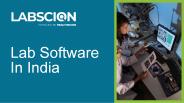Pathologylabsoftware PowerPoint PPT Presentations
All Time
Recommended
LIMS is now like the backbone of any lab, so it’s always a good idea to have a detailed understanding of lab software. When you have a detailed understanding of LIMS, you can easily choose the best laboratory information system as well as the best provider. The requirements specification process should begin as soon as possible as they are the basis for assessing and selecting the LIMS platform and, ultimately, determining how much modification is required.
| PowerPoint PPT presentation | free to download
Laboratories are the primary beneficiary of simplified laboratory operations. LIMS minimizes the number of manual processes required to a bare minimum, lowering the risk of human errors. Now researchers in the lab spend less on paperwork and more on research, all because of automation.
| PowerPoint PPT presentation | free to download
Who would have thought a decade back that software would be managing everything in a lab? But now it’s a reality. A laboratory information management system automates the workflow of the lab. It eliminates the need for manual work, thus reduces the likelihood of human errors in the laboratory.
| PowerPoint PPT presentation | free to download
The plethora of powerful features of lab software, with easy-to-use functionality, greatly enhances and streamlines laboratory works. It saves time and reduces the need for papers. LIMS optimizes the process and makes the lab efficient enough to fulfill any requirement.
| PowerPoint PPT presentation | free to download
The first thing you should decide is the type of LIMS you need in your lab. Two types of LIMS are widely used as pathology software in Noida, one is onsite, and the other is Cloud-based LIMS. Nowadays, Cloud-based LIMS is preferred because of its ease of access and affordability. A Cloud-based LIMS is easy to implement and typically less expensive than an onsite LIMS. It minimizes loading time on already extended IT resources, thus improves networking. However, laboratories must evaluate their lab equipment whether they would function on the cloud or not?





